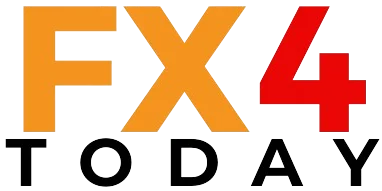Bitcoin and Solana fell following the news that FTX will start its second round of creditor payouts on May 30, releasing more than $5 billion via BitGo and Kraken. The distributions, as part of the FTX Recovery Trust’s restructuring proposal, will be paid to both Convenience and Non-Convenience class of creditors with recovery rates between 54% and 120% depending on claim type. Participants are worried that the broad-based asset disburseals will add selling pressure, especially after FTX’s earlier SOL unlock in March prompted a similar decline.
KEY LOOKOUTS
• FTX will start its second phase of creditor payments, affecting both Convenience and Non-Convenience class creditors who have qualified.
• Dotcom Customer Entitlement Claims will receive 72%, US Customer Claims 54%, General Unsecured and Digital Asset Loan Claims 61%, while Convenience Claims can get up to 120%.
• Bitcoin fell 0.5% and Solana almost 4% after the news, with investors fretting about the potential distributed asset sell-off contributing to overall market instability.
• Eligible creditors have to sign up on one of these platforms to get paid out, and in doing so they waive their entitlement to receive any future cash payouts.

FTX’s forthcoming $5 billion creditor distribution, which is to start May 30, has triggered new volatility in the crypto market, with Bitcoin and Solana falling by 0.5% and coming close to 4%, respectively. The distributions will be distributed through several classes of creditors with recovery levels of 54% to 120%, depending on claim type. While funds are disbursed through BitGo and Kraken, investors are closely observing for sell pressure that may be triggered once recipients receive and possibly sell their assets. The action represents a notable progression in FTX’s ongoing bankruptcy resolution and underscores the market’s sensitivity to mass-scale asset releases.
FTX will commence a $5 billion creditor payout on May 30, prompting minor dips in Bitcoin and a more acute decline in Solana. Investors are wary of the release of funds potentially adding to selling pressure in the market.
• The second phase of creditor payouts starts on May 30, 2025.
• Funds will be paid out to both Convenience and Non-Convenience class creditors.
• Dotcom Customer Claims will receive 72%, U.S. Customer Claims 54%, and Convenience Claims up to 120%.
• Redemptions will be made via BitGo and Kraken, which are registered.
• By registering with distribution firms, creditors surrender rights to future cash payments.
• Bitcoin fell 0.5%, and Solana fell almost 4% after the news.
• Investors worry that huge asset unlocks and distributions may cause more sell-offs and upward pressure on prices.
FTX has announced that it would start the second round of creditor payments on May 30, discharging more than $5 billion to qualifying claimants. The payout is part of the company’s relentless pursuit of settling its bankruptcy case and paying back victims of its 2022 failure. The money will be paid out to Convenience and Non-Convenience class creditors that have finished the necessary procedures. The platforms of BitGo and Kraken have been assigned to service the process, and creditors are required to enroll in either of them to get a portion of their claim.
BITCOIN DAILY PRICE CHART

CHART SOURCE: TradingView
According to the plan of distribution, various groups of creditors will get different percentages of their claims based on the type of their entitlement. Convenience Claims will receive a maximum of 120%, Dotcom and U.S. customer claims will receive 72% and 54%, respectively. The process is a demonstration of the FTX Recovery Trust’s intent to settle claims efficiently and equitably. The second round of payments is the follow-up to initial distributions earlier this year and is another significant step in FTX’s attempt to make right with its international creditor community.
TECHNICAL ANALYSIS
Bitcoin was weak for a moment after the FTX news, falling slightly but still holding above major support levels and indicating cautiously but not nervously bullish sentiment. Solana had a more immediate response, with the price pulling back toward past tested support areas, meaning possible near-term selling pressure potentially associated with past FTX-related token unlocks. Traders can observe consolidation or higher volume at these levels as signs of whether the market will stabilize or continue to respond to distribution-related events.

FORECAST
In the event that the FTX distribution process goes smoothly and without significant sell-offs, the market can regain confidence, particularly from retail and institutional investors. As those eligible to receive their monies do so via regulated exchanges such as Kraken and BitGo, the possibility of some of that money being put back into the digital assets, like Bitcoin and Solana, exists. It could be good for prices and good enough to cause a moderate to upward trend, provided wider market sentiment is optimistic and macroeconomic fundamentals are good.
Conversely, unlocking more than $5 billion in assets would potentially create short-term selling pressure, especially from creditors who decide to sell their holdings on the spot. Solana could be at greater risk in this regard because of its prior exposure in FTX holdings as well as the market’s susceptibility to big token movements. If large amounts of the distributed crypto are dumped, it would lead to transient price drops and heightened volatility, especially in mid-cap altcoins and tokens linked with the FTX estate.






